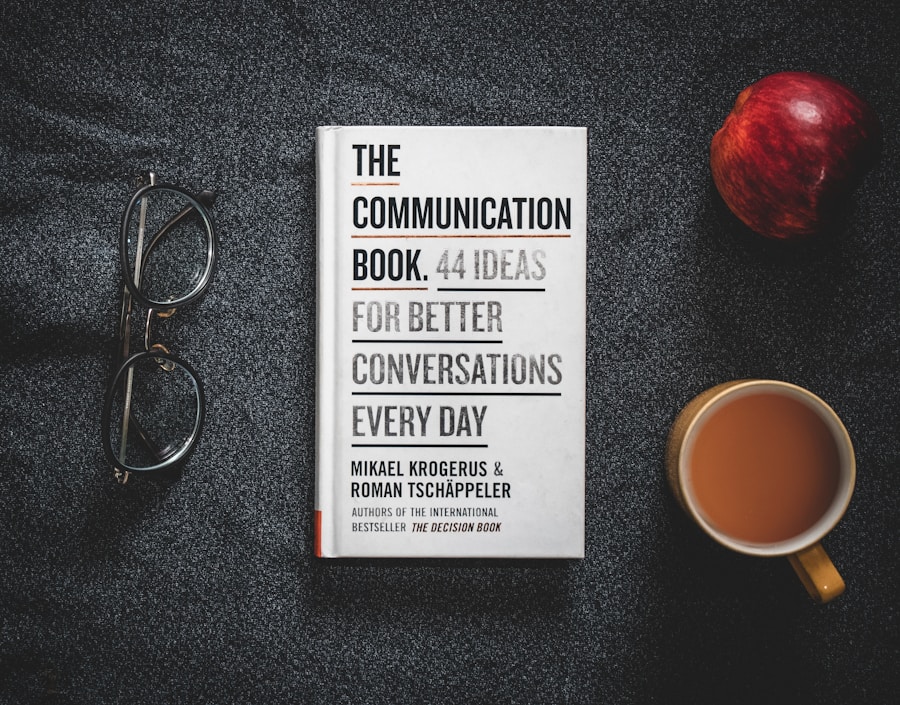Communication serves as the bedrock of human interaction, facilitating the exchange of ideas, emotions, and information. It is not merely about the words spoken; it encompasses non-verbal cues, tone, and context. Effective communication fosters understanding and collaboration, whether in personal relationships, professional settings, or broader societal interactions.
The ability to convey thoughts clearly and listen actively can significantly influence outcomes in various scenarios, from negotiating a business deal to resolving conflicts in personal relationships. In essence, communication is the thread that weaves together the fabric of society, enabling individuals to connect and collaborate. Moreover, the significance of communication extends beyond mere interaction; it plays a crucial role in shaping perceptions and building trust.
In a workplace environment, for instance, transparent communication can enhance team dynamics and promote a culture of openness. Employees who feel heard and understood are more likely to engage fully in their roles, leading to increased productivity and job satisfaction. Similarly, in personal relationships, effective communication can prevent misunderstandings and foster deeper connections.
By articulating thoughts and feelings clearly, individuals can navigate complex emotional landscapes, ultimately leading to healthier and more fulfilling relationships.
Key Takeaways
- Effective communication is crucial for building strong relationships and achieving success in both personal and professional settings.
- Barriers to communication can include physical barriers, language barriers, emotional barriers, and cultural differences.
- Active listening involves fully concentrating, understanding, responding, and remembering what is being said.
- Developing empathy and emotional intelligence can help in understanding others’ perspectives and emotions, leading to better communication and relationships.
- Overcoming language and cultural barriers requires open-mindedness, patience, and a willingness to learn and adapt to different communication styles.
Recognizing Barriers to Communication
Physical Barriers to Communication
One of the most prevalent barriers is physical distance, which can create a sense of disconnection. In an increasingly digital world, reliance on technology for communication can lead to misunderstandings due to the absence of non-verbal cues. For instance, an email may be interpreted differently than intended because the recipient cannot gauge the sender’s tone or body language.
Psychological Barriers to Communication
Another significant barrier is psychological factors such as stress, anxiety, or preconceived notions. When individuals approach a conversation with biases or emotional turmoil, their ability to listen and respond effectively diminishes. For example, if someone enters a discussion with a defensive mindset due to past experiences, they may misinterpret constructive feedback as criticism.
Cultural Barriers to Communication
Cultural differences can also pose challenges; varying communication styles across cultures can lead to misinterpretations. Understanding these barriers is essential for anyone seeking to enhance their communication skills, as it allows for proactive measures to mitigate their impact. By being aware of these potential barriers, individuals can take steps to overcome them and communicate more effectively.
Improving Active Listening Skills

Active listening is a critical component of effective communication that often goes overlooked. It involves fully concentrating on what is being said rather than merely hearing the words. This skill requires practice and a conscious effort to engage with the speaker.
One effective technique for improving active listening is to employ reflective listening, where the listener paraphrases what the speaker has said to confirm understanding. For example, if a colleague expresses frustration about a project deadline, responding with, “It sounds like you’re feeling overwhelmed by the timeline,” not only validates their feelings but also encourages further dialogue. Additionally, maintaining eye contact and using affirmative gestures can enhance active listening.
These non-verbal cues signal to the speaker that their message is being received with attention and respect. It is also important to minimize distractions during conversations; putting away phones or closing laptops can create an environment conducive to focused listening. By honing active listening skills, individuals can foster deeper connections and ensure that conversations are more productive and meaningful.
Developing Empathy and Emotional Intelligence
Empathy and emotional intelligence are integral to effective communication, as they enable individuals to understand and relate to others’ feelings and perspectives. Empathy involves recognizing emotions in oneself and others and responding appropriately. For instance, when a friend shares their struggles with a personal issue, expressing empathy might involve saying something like, “I can imagine how difficult that must be for you.
Emotional intelligence encompasses self-awareness, self-regulation, motivation, empathy, and social skills. Individuals with high emotional intelligence are adept at navigating social complexities and managing their own emotions in interactions. For example, in a workplace setting, an emotionally intelligent leader might notice when team members are disengaged or stressed and take proactive steps to address these issues through open dialogue or support initiatives.
Developing these skills requires introspection and practice; engaging in activities such as journaling or seeking feedback from trusted peers can facilitate growth in emotional intelligence.
Overcoming Language and Cultural Barriers
In our globalized world, language and cultural barriers are increasingly common challenges in communication. Language differences can lead to misunderstandings or misinterpretations of messages. For instance, idiomatic expressions that are common in one language may not translate well into another, potentially causing confusion for non-native speakers.
To overcome these barriers, it is essential to adopt clear and straightforward language when communicating with individuals from diverse linguistic backgrounds. Avoiding jargon or overly complex terminology can help ensure that messages are accessible to all parties involved. Cultural differences also play a significant role in shaping communication styles.
For example, some cultures prioritize directness and assertiveness in conversations, while others may value indirectness and subtlety. Being aware of these differences can enhance cross-cultural communication effectiveness. Engaging in cultural competence training or seeking out diverse perspectives can provide valuable insights into how different cultures communicate.
By fostering an environment of respect and openness towards cultural differences, individuals can bridge gaps in understanding and create more inclusive communication practices.
Utilizing Effective Communication Strategies

Shifting the Focus from Blame to Personal Feelings
One such strategy is the use of “I” statements instead of “you” statements during discussions about sensitive topics. For example, saying “I feel frustrated when deadlines are missed” rather than “You always miss deadlines” shifts the focus from blame to personal feelings, reducing defensiveness and promoting constructive dialogue.
Establishing Clear Objectives and Summarizing Key Points
Another effective strategy is to establish clear objectives for conversations or meetings. By outlining specific goals beforehand—such as resolving a conflict or brainstorming ideas—participants can stay focused and ensure that discussions remain productive. Additionally, summarizing key points at the end of conversations can reinforce understanding and clarify any lingering uncertainties.
Mastering the Art of Communication
Utilizing these strategies not only enhances individual communication skills but also contributes to creating a culture of effective communication within teams and organizations. In conclusion, mastering the art of communication involves understanding its importance, recognizing barriers, improving active listening skills, developing empathy and emotional intelligence, overcoming language and cultural barriers, and utilizing effective strategies. By investing time and effort into these areas, individuals can significantly enhance their ability to connect with others and navigate complex interpersonal dynamics successfully.
In a related article, Harnessing Technology Resources: A Comprehensive Guide, the importance of utilizing technology to improve communication is discussed. Technology can help overcome common barriers to communication by providing various tools and platforms for effective interaction. By understanding how to leverage technology resources, individuals and organizations can enhance their communication strategies and ultimately improve their overall effectiveness in conveying messages.
FAQs
What are common barriers to communication?
Common barriers to communication include language barriers, physical barriers, emotional barriers, cultural barriers, and perceptual barriers. These barriers can hinder effective communication between individuals or groups.
How can language barriers be overcome in communication?
Language barriers can be overcome by using simple and clear language, providing translation services or interpreters, using visual aids, and being patient and understanding with individuals who may not speak the same language.
What are some examples of physical barriers to communication?
Physical barriers to communication include distance, noise, poor lighting, and physical obstructions. These barriers can be overcome by using technology, finding a quiet and well-lit space, and removing any physical obstructions that may hinder communication.
How can emotional barriers be overcome in communication?
Emotional barriers can be overcome by practicing active listening, showing empathy and understanding, and creating a safe and supportive environment for open communication. It is important to acknowledge and address emotions in order to overcome these barriers.
What are some strategies for overcoming cultural barriers in communication?
Strategies for overcoming cultural barriers in communication include learning about different cultures, being open-minded and respectful, avoiding stereotypes, and seeking to understand and appreciate cultural differences. Building cultural competence is essential for effective communication across diverse groups.
How can perceptual barriers be overcome in communication?
Perceptual barriers can be overcome by being aware of one’s own biases and perceptions, seeking feedback and clarification, and being open to different perspectives. It is important to recognize and challenge our own perceptions in order to overcome these barriers.






















+ There are no comments
Add yours